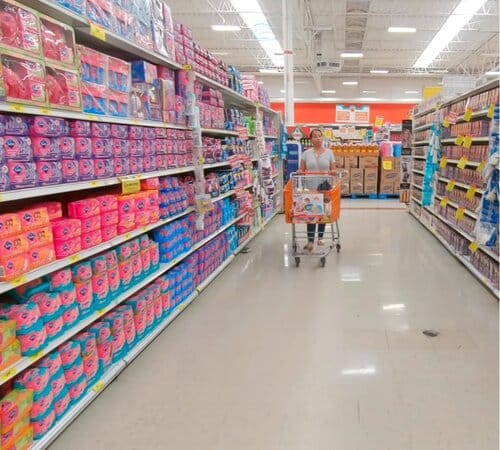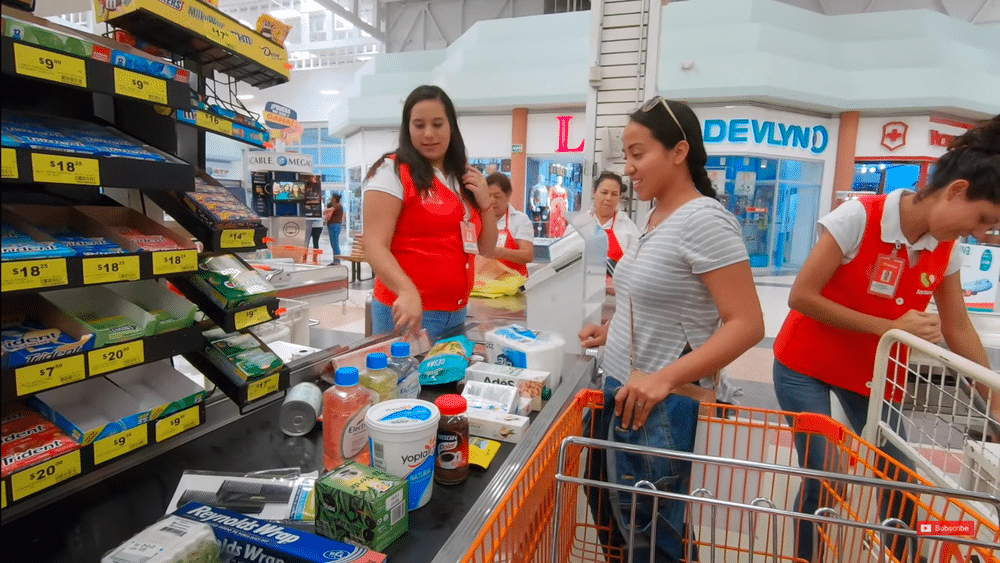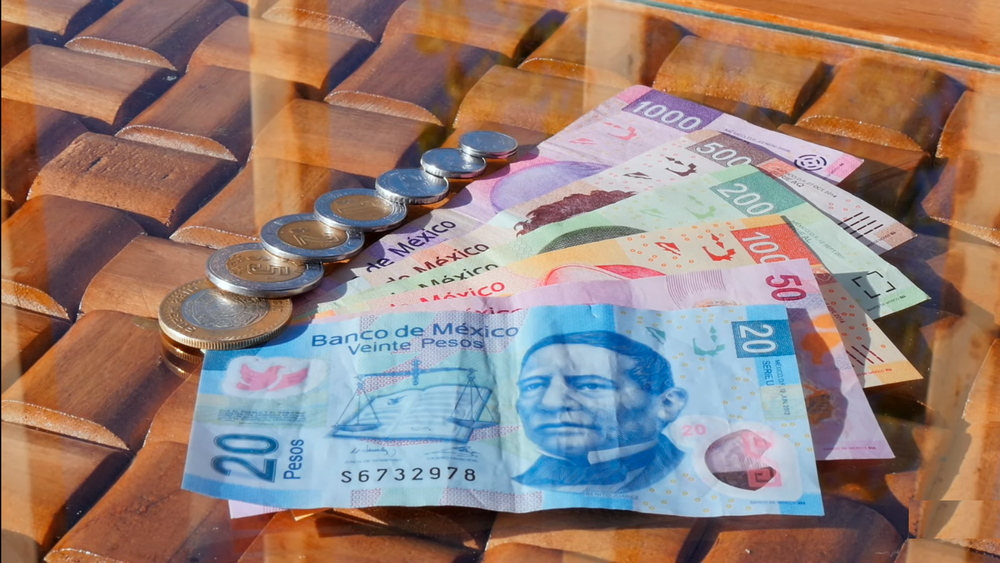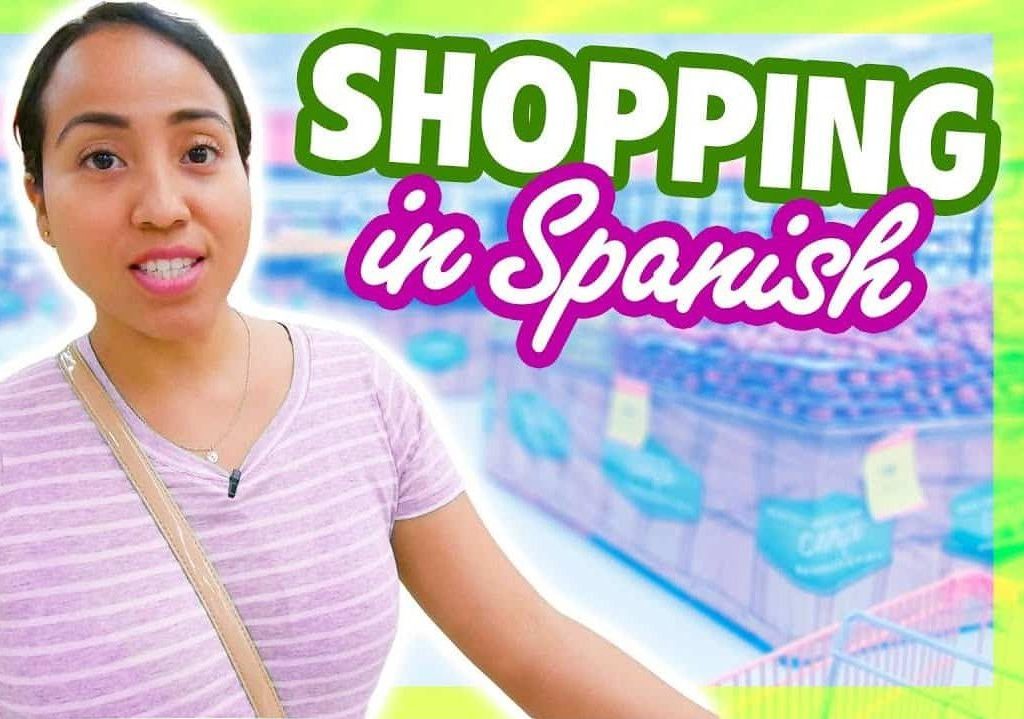How to Go Grocery Shopping in Spanish – Essential Supermarket Phrases, Vocabulary, and More
Download the Grocery Shopping PDF Here
Get the PDF and many other tools to start speaking and traveling even faster.
No spam, ever. Only the good stuff.
So, you’re in a Mexican “Supermercado” (Grocery store) to buy some food and essentials, and you are looking for an item – what do you do or say? Don’t let grocery shopping in a Spanish country get you down. Learn some of these Spanish words and phrases to help you save time and get the most out of your grocery trip.
Common Grocery Store Sections
Familiarize these vocabularies for the most common sections in grocery stores for your convenience.
All establishments have “entrada” (entrance) and “salida” (exit). Every single grocery store is divided by “secciones” (sections) and further divided by “pasillos” (aisles).

Here are some of the most common sections at a grocery store in Mexico:
- La Verdulería – Vegetables
- La Frutería – Fruits
- La Pescadería – Fish
- La Carnicería – Butcher
- La Panadería – Bakery
- Los Productos Lácteos – Dairy Products
- La Farmácia – Pharmacy
- Higiene Personal – Personal Hygiene
- Los Electrónicos – Electronics
- Los Electrodomésticos – Electrical Appliances
Other sections most grocery stores have are:
- La Jardinería – Gardening
- Los bebés – Babies
- La Juguetería – Toys
- La Ferretería – Hardware
- Las Mascotas – Pets
- La Papería – Printing or Office Supplies
- Los Muebles – Furniture
How to Ask Where to Find an Item

When in a grocery store, you are most likely to ask where to find an item or if the store sells a particular thing you need. Read through this conversation:
May: Good afternoon. Excuse me, miss, tin foil?
Employee: Where the dog food is, in front of it.
May: Ok. Thanks.
Employee: Between eleven, nine, and ten. Somewhere there between those three.
May: Ok, and this is number fifteen. And it goes that way, right?
Employee: Yes, a bit further down.
May: Ok, thank you.
Employee: Yeah.
May: Buenas tardes. Disculpe señorita, ¿el papel aluminio?
Employee: Donde esta… la comida para perros, enfrente.
May: Bueno, gracias.
Employee: Entre… entre 11, 9 y 10. Por ahí en esos tres.
May: Ok, y este es el 15. Y va para allá, ¿verdad?
Empleado: Sí, más pa’ abajo.
May: Ok, gracias
Empleado: Sí.
In this sample conversation, May asked for a tin foil. “Disculpe señorita, ¿el papel aluminio?” (Excuse me, miss, tin foil?), is a shorter way to say, “¿Dónde está el papel aluminio?” (Where’s the tin foil?) You can use either phrase, be sure to make it clear that you’re asking a question by raising the intonation of your voice as you speak when using the shorter version.
It is also common all over the Spanish-speaking world to say “pa’” instead of “para,” which both means “for.” Even though many people associate it with lower education, it’s worth knowing that you’re very likely to hear it in day-to-day situations and interactions with locals when visiting a Spanish-speaking country.
Here are other phrases you can use to ask for something at the grocery store:
- ¿Dónde tienen el papel aluminio? – Where do you have the tin foil?
- ¿Venden papel aluminio aquí? – Do you sell tin foil here?
- ¿En qué pasillo puedo encontrar el papel aluminio? – In what aisle can I find the tin foil?
- Estoy buscando papel aluminio, ¿lo venden aquí? – I am looking for an aluminum foil. Do you sell it here?
Checking Out and Paying
Checking out is the most challenging part when going to the grocery because they sometimes use phrases that you might not be expecting. For example, the cashier might ask you if you want to round up your total for charity or if you want to recharge your phone plan or if you have a rewards card that you want to use.
Here is another conversation during checkout.

At the cash register:
Cajera: Hola, buenas tardes.
May: Buenas tardes.
Cajera: ¿Tiene una tarjeta de puntos?
May: No, no tengo. Acá traigo una bolsita también. A ver que cabe ahí.
Embolsadora: Ah, está bien. Sí, le pongo ahí.
Cajera: Seiscientos setenta y nueve pesos. ¿Va a pagar con tarjeta?
May: Ajá
Cajera: Nada más necesito que me lo firme en el espacio en blanco y posteriormente en la palomita, por favor.
May: Ok.
Cajera: Aquí, mira. Sobre el espacio en blanco.
May: ¿Ya?
Cajera: Sí. Aquí tienes.
May: Muchas gracias.
Cajera: Que te vaya bien.
Embolsadora: Que tenga buena tarde. Que le vaya muy bien.
May: Gracias. Mire… (dando propina a la embolsadora)
Embolsadora: Gracias. Que le vaya muy bien.
Cashier: Hi, Good afternoon.
May: Good afternoon.
Cashier: Do you have a rewards card?
May: No, I don’t have one. I have a small bag here too. Let’s see what fits in it.
Bagger: Ah, alright. Yeah, I’ll put some things in there.
Cashier: Six hundred seventy-nine pesos. Are you paying by card?
May: Uh-huh
Cashier: I need you to sign in the white space and then click the checkmark, please.
May: Ok.
Cashier: Here, look, in the white space.
May: Now?
Cashier: Yes. Here you go.
May: Thank you very much.
Cashier: Have a good day.
Bagger: Have a good evening. Have a great day.
May: Thank you. Here you go. (Tipping the bagger)
Bagger: Thank you. Have a great day.
Here are additional common phrases that you will likely encounter during checkout:
- ¿Gusta redondear? – Would you like to round up?
In Mexico, this question often comes up at supermarkets with no context, which is sometimes for charity but is entirely optional. You can respond:
- Sí – if you would like to round up your total bill; or
- No, gracias – if you would like to pass.
- ¿Necesita alguna recarga? – Do you need a phone recharge?
Many people recharge their phone plans at the supermarket. If you want to recharge your phone plan, say, “Sí, por favor.” Then they’ll typically ask you additional questions:
- ¿Qué compañía? – Which company?
- ¿Qué plan te gustaría? – What plan would you like?
- ¿De cuanto? – How much?
Right before paying with a card, you might hear:
- Tarjeta de credito o debito? – Credit or debit card?
And if they need to confirm your ID, they’ll ask:
- ¿Me permite su identificación? – Can I see your ID?
And don’t forget to tip your bagger. In Mexico, this is culturally expected as baggers are generally elderly individuals working for tips. While the tip is up to you, a good guideline is at least five pesos for one or two bags. We usually tip around 15 pesos for five to eight bags.

There you have it – use these basic phrases the next time you visit a Spanish supermarket and with a little practice you’ll quickly have them mastered. Let us know if you are missing some more vocabulary to help make your grocery experience even better.
Want to learn how to go shopping for clothes and other items? Be sure to check out our articles:


Related Posts
21 Must Know Food Sayings in Spanish
How to Make a Hotel Reservation in Spanish
How to Make Small Talk in Spanish